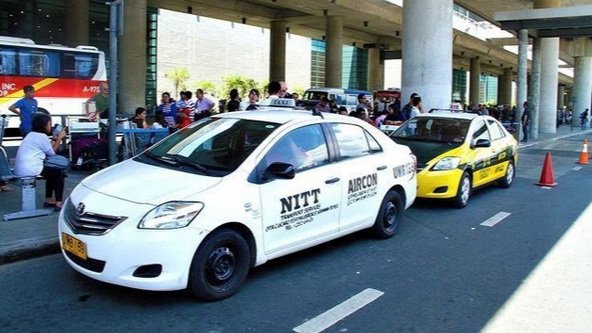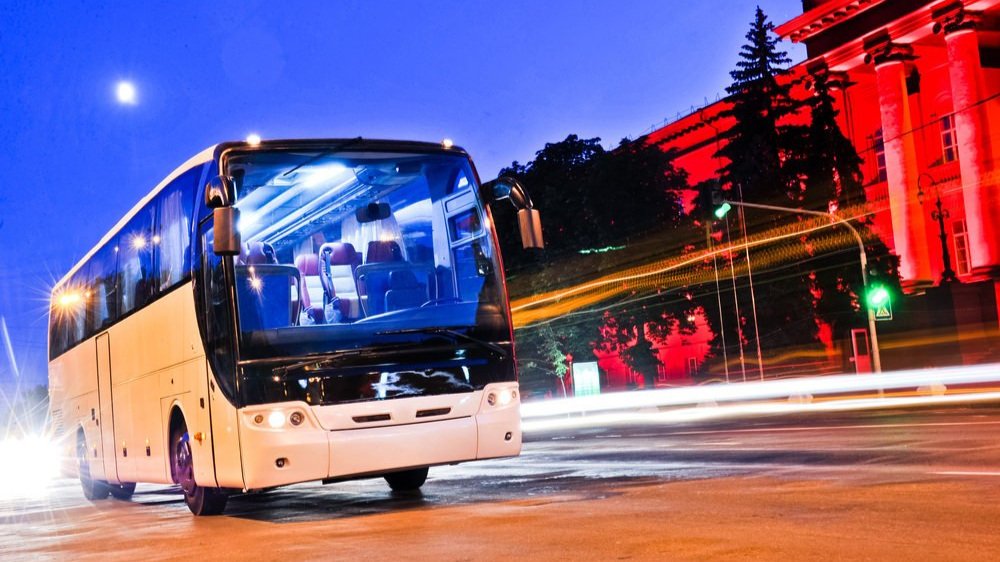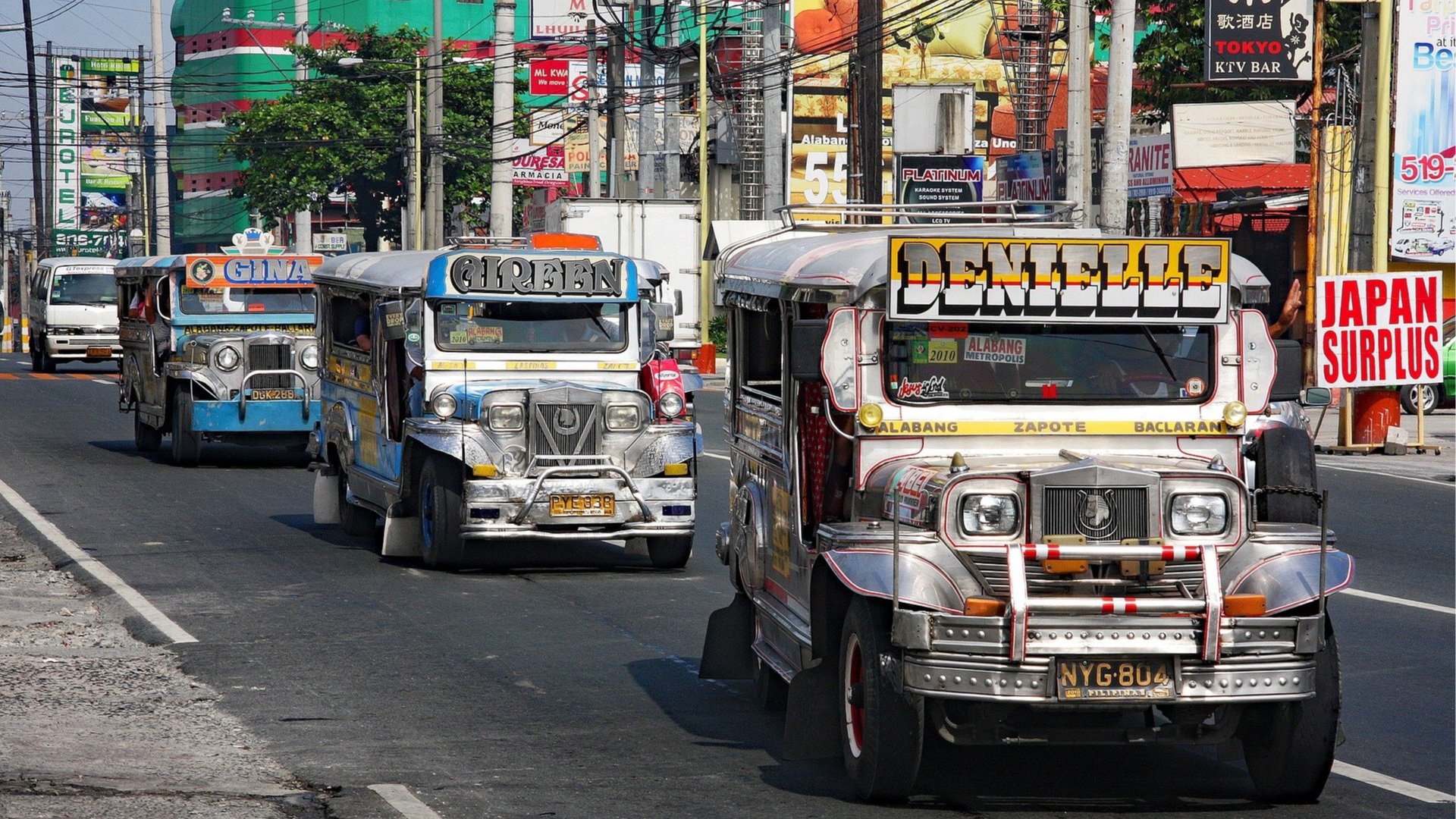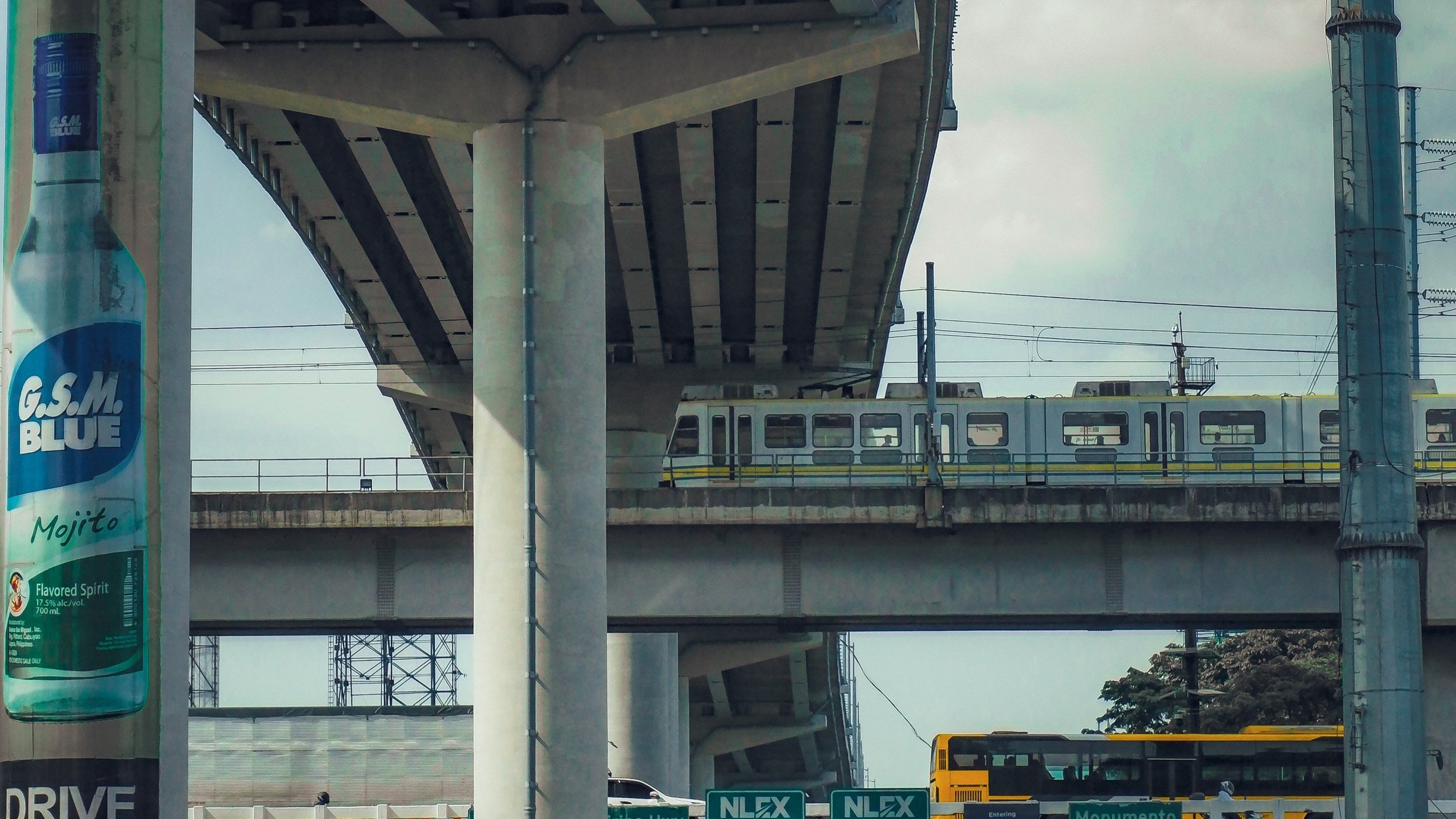Transport Options in Metro Manila, the Capital of the Philippines
Traveling around the Philippines may be challenging if you do not know what type of transportation to take and how much it costs. Metro Manila in the National Capital Region is composed of around 16 different cities.
Most people in the Philippines speak English. What does that mean for you? Simple! You won’t have a hard time getting the information you need. All you have to do is ask the helpful locals around.
How to Get Around Manila?
Don't know how to get to your destination? Ask the taxi, bus, jeepney or tricycle (motorbike with sidecar) driver. Filipinos are naturally friendly and hospitable. Just avoid being rude, so you will be respected in return.
Listed below are the transportation options in the Philippines.
-
How to Get Around Manila by GrabCar?
Safety is everyone’s priority. If you want to roam around Metro Manila in a safe and comfortable way, GrabCar is the best option for you. Grab is a Singaporean-owned technology company that operates in the Southeast and East Asian countries including the Philippines. It is the most flexible and safest booking service in the archipelago.
To avail of this service, install or download the Grab App on your mobile phone, book a ride online, and wait for GrabCar driver to take you to your destination in Metro Manila.
Note: To use your smartphone in the Philippines, you need to have mobile data internet access. So, buy a Filipino SIM card upon your arrival.
With Grab, a ride-hailing company similar to UBER, drivers navigate with GPS/Waze and offer fixed fare. Take note that the rates vary depending on your destination. Aside from comfort, this on-demand taxi service steers you clear from getting overcharged on fare. And, you can settle your fare through the Grab app using a credit card, debit card, or cash.
Here’s the catch. The Grab app assigns private hire cars to passengers nearby. Just set your pick-up and drop-off points in the app, and you’re good to go.
Traveling with someone? Not a problem. You can share a ride with them.
As a reliable travel buddy, all Grab driver-partners have proper onboarding requirements and follow a set of safety guidelines and standards to guarantee passenger protection. -
How to Get Around Manila by Taxi?
If you want a more private ride, listen up! Touring around the metropolitan area by taxi is recommended. Remember, always be polite when dealing with people. Courteously request the taxi driver to turn the taxi meter on as you get into the taxi.
Most first-time visitors to the country prefer taking a taxi, so they won’t get lost. It is the easiest way to get around Manila. But,a taxi fare is more expensive than jeepney and bus fares, especially when you are stuck in traffic. Taxi meters do not just charge by travel mileage but by minute of travel too.
Make sure to give the driver the right address before you start your ride. One more thing! Check if the taxi meter is working properly.
Note: When taking a taxi, look for the driver’s registration certificate posted on the windshield or dashboard. In the absence of such a document, feel free to ask the driver about it. -
What are the Best Motorcycle Ride-Sharing Apps in the Philippines?
If you don’t find the train ride ideal, try a motorcycle ride instead. There are two motorcycle-sharing apps in the country that you can take advantage of. Get a fast and reliable transport service from Angkas and Joyride. Download the app on your mobile phone and book for a ride. This makes a perfect option for those who are in a hurry to get to their destination.Angkas is a Singaporean-owned motorcycle booking app that has been operating in the Philippines since 2017. Aside from being a quick way to get to your destination, this is a practical public transport option for solo travelers or commuters.
Now ask yourself. Do you mind riding on a motorcycle under the sun's prickling heat? If not, grab your face mask and get ready for a motorcycle ride. Remember, wearing a mask protects you from pollution and virus.
Unlike Grab services, getting a motorcycle ride is relatively cheap. Angkas only accepts cash. Thus, the fixed fare is calculated upon booking confirmation. So, you won’t worry about getting in trouble with overcharging drivers.
Angkas takes pride in its good services and approximately 27,000 riders operating in Metro Manila and Cebu. In fact, this booking company looks forward to expanding further in the years to come.
2. Joyride works similar to Angkas. Founded in 2019, this motorcycle booking company provides lower fare rates to passengers and higher pay to motorcycle drivers. This is the company’s way of competing with Angkas.
-
How to Get Around Manila by Renting a Car?
At this point, you might be planning to get a more flexible and self-guided trip to the Philippines. Tour around the country by renting a car. You can self-drive as a tourist or rent a car that comes with a skilled driver.
As a Left-Hand-Drive (LHD) country, cars in the Philippines have a steering wheel located on the left side of the vehicle. If you are not familiar with how the driving system works in the country, have someone drive the rental car for you. This is to ensure safe and comfortable travel.
What are the Requirements to Drive a Car in the Philippines as a Tourist?
If you decide to rent a car and self-drive, the next important thing that you should do is know the essential documents to be allowed to drive a car in the Philippines.
As a tourist, you can drive as long as you have an International Driving Permit and a foreign driver’s license (acquired in your country of origin). On top of that, car rental companies in the Philippines have enforced conditions and limitations that you ought to follow.
• Your foreign driving permit must be written in English. If not, you can contact your embassy to obtain an official English translation.
• You can drive with a foreign license for a maximum of 90 days, and must obtain a driving permit from the Land Transportation Office (LTO) to continue driving in the Philippines beyond the 90th day.
• An International Driving Permit is valid only if it goes along with a regular driver’s license (domestic license issued by the country where you came from).
• A credit card with the main driver's name acts as a bond, and should be presented upon car rental transactions.
Note: If you do not have past experience in driving around Manila, self-driving is not recommended. Few careless drivers and narrow roads in the Philippines could be challenging. -
How to Ride a Tricycle in Manila?
Want to know other options to take for short distance trips? A tricycle is ideal for set routes and for-hire short trips in Metro Manila. But, it is not allowed to pass through major roads in Manila. A tricycle is a customized, Filipino style motorcycle with a sidecar.
Before you ride, always ask for the fare rate. Many tricycle drivers tend to overcharge passengers who do not know how much to pay.
Riding the tricycle in Manila is as exciting as riding it in the province. You’ll be amazed at how tricycle drivers squeeze into the traffic, and pass narrow and bumpy roads just to get you to your destination faster.
No wonder why foreign tourists love getting tricycle rides when touring around the country. You can find more about tricycles here. -
How to Get Around Manila by Jeepney?
Traveling around Manila by jeepney is challenging but fun. Jeepney is the most popular transportation for locals. It carries passengers sitting together side by side, and operates in designated routes around Metro Manila, National Capital Region.
Since there are around hundreds of jeepney routes traveling around Manila, the only way to reach your desired destination without getting lost, is ask before you get on it.
Although jeepney fares are fixed, there are times that drivers decide how much to charge depending on your destination. The minimum fare only covers the first 4 kilometers traveled, and may increase upon the approval of the Land Transportation Franchising and Regulatory Board (LTFRB).What is the Historical and Cultural Importance of Jeepneys in the Philippines?
Decades ago, jeepneys operating in the Philippines were US’ leftover military jeeps after World War II. Today, jeepneys are produced with Japanese high-powered diesel engines and parts. No wonder why these vehicles are perfect for adventure-filled long distance travel across hilly or mountainous roads like Sagada and Buscalan.
The most common thing about jeepneys are its colorful texts and designs – showcasing Philippines’ humor and tradition. This is the reason why jeepneys have become a symbol of Philippine art and culture. And the best part? There are jeepneys that drive people to Sagada from Manila via private hire.
If you are a first-time traveler to the country, you must not miss a jeepney ride. Find out how payment works on jeepneys through our Philippines Transport Travel Guide post. -
How to Travel Outbound from Manila by Bus?
Commuting in Metro Manila can be overwhelming for guests. Also, a hassle-free ride is not a guarantee. Many bus drivers do not follow the designated bus stop. Some city and provincial buses in Manila are air-conditioned, while some are not. But, city buses are highly popular among locals because these buses have routes within Metro Manila.
Planning to travel outbound Manila? Take a provincial bus. You will be interested to know that going outbound from Manila to the neighboring provinces does not have to be expensive and inconvenient. Most of the top tourist destinations reachable by bus are budget-friendly.
Provincial buses in Manila have designated areas or terminals for loading and unloading passengers. They also have enough luggage space and bigger legroom for your convenience. Once seated, the bus conductor will normally ask you where you are heading to. Tell him/her your destination, get your bus ticket, and pay the fare.
Note: Some drivers allow vendors to sell snacks inside the bus. Don't get shocked when one of the passengers stands to preach, then asks for donations in the form of money.
Latest Updates on Using GrabCar
Starting November 2020, GrabCar passengers can use Grab’s Cash-In With Driver feature. Want to know how it works? Pay all ears. First, create a GrabPay wallet using your mobile phone. Next, fund your wallet through the payment channels like 7-11 outlets, banks, and Instapay. Pay for the ride by clicking the app’s Cash-in with Driver option. Just follow the prompt, and wait for the confirmation of a successful payment transaction. For more details, read here.
If your Grab Wallet runs out of funds, ask your driver for a cash in. As long as he has sufficient balance on his account, he can accommodate your request while on the ride. Another option is reload through the payment channels mentioned above.
-
GrabTaxi is a service that partners with other licensed taxi services in the Philippines. It provides detailed information about the car you are about to ride including its plate number, the driver’s name and phone number, and the estimated cost of your ride.
GrabCar lets you know your driver’s personal details, the estimated time of arrival, the trip duration, and the fixed fare rate regardless of the route. To avail of this car booking service, simply choose the GrabCar icon via Grab app.
With GrabCar, you can book private cars and choose between a 4-door Sedan car with a roof that slopes down to the trunk, and an SUV-ride that can accommodate around 6 passengers (GrabCar Premium).GrabShare gets you a ride with other passengers heading to the same direction. Fares can be 40% less than the regular GrabCar transport cost. Commuters are dropped off according to their sequence in the app.
Although this option is cheaper than other Grab options, the trip may take long. If you are in a hurry, this Grab option is not advised. Book a GrabCar or GrabTaxi instead.GrabCar Premium allows you to select specific private cars and brands so you can enjoy a more comfortable ride. This option is ideal for commuters who travel in groups, and for solo travelers who carry a lot of luggage.
Note: You can find the 4 Grab transport services on the Grab app. When booking a regular taxi or a private transport, open the app and choose the right icon.
-
Do you have fare disputes or other concerns on Grab’s services? Get helped through the App Help Centre.
The Emergency Help button may be used whenever there are serious incidents needing police assistance. When launched, it directly connects your call to the Police Hotline 113.
Note: If you are not confident of traveling alone by a GrabCar, you may request a same-gender hitch driver upon booking.
How to Get Around Manila by Train?
Navigate around Manila without getting lost. With Metro Rail Transit (MRT) and Light Rail Transit (LRT), it is a guarantee. MRT trains are painted blue, while LRT 1 and 2 trains are painted yellow. With these two train systems, you can circle nearly all areas in Manila.
• Light Rail Transit or LRT passes over the City of Manila and Quezon City. It is recommended for daily transportation, except during rush hour because it gets overcrowded.
• Metro Rail Transit or MRT traverses Epifanio Delos Santos Avenue (EDSA), which is arguably the busiest road in Metro Manila. Just like Light Rail Transport (LRT), it is an ideal daily transport option. But, save yourself from the congestion by not getting an LRT ride during rush hour.
Metro Rail Transit (MRT) and the Light Rail Transit (LRT) both run across the two main avenues in the Philippines’ capital city, Manila. To know more about these public transport systems, politely ask the employees at your preferred MRT and LRT stations. Or, you may go ahead and visit their official websites.
The LRT Line 1 is a fully elevated route that leaves from Baclaran, Parañaque City (southernmost terminal) to Monumento, Caloocan City (northernmost terminal). It consists of around 18 stations. This route passes by the cities of Quezon City, Caloocan City, Manila, Pasay City, and Parañaque City of the Metro Manila region.
Note: If you missed your station, pay close attention to the automated stop announcements on the train. There are signages and maps visible at each station too.
The LRT Line 2 reaches Santolan station in Pasig City (easternmost station) from Recto station in Manila (westernmost terminal). It passes through approximately five cities in Metro Manila, namely, Pasig City, Marikina City, Quezon City, San Juan, and Manila.
The train moves across Taft Avenue in Pasay City and North Avenue in Quezon City . Bridging Pasig City and the town of San Juan, the route connects the cities of Caloocan, Quezon, Mandaluyong, Makati, and Pasay.
Manila Rail Transit (MRT) is known as the fastest and most frequently used public utility transport in the Philippines since 1999. Steer clear from the heavy traffic congestion along EDSA by taking an MRT ride.
Here’s a kicker! Rush hour in the Philippines starts at around 7 a.m. to 10 a.m. and 5 p.m. to 8 p.m. During these times of the day, expect to see large crowds of commuters on the trains. In fact, a door-pusher might be needed to manually close the train’s door due to overcrowding.
Expat Guide: MRT and LRT in Metro Manila
Did you know that Metro Manila has the second worst traffic in the world? A usual 30-minute trip might turn into a 2-hour ride when traveling in the city during rush hour. Don’t let traffic prevent you from getting the best experience out of your trip to the Philippines.
Rush Hour in Manila is from 7 a.m. to 10 a.m. and 5 p.m. to 8 p.m. So, spend extra time getting to your destination in the metropolitan area, especially when you’re heading to the airport or terminal during rush hour.





How to Commute by Pasig River Ferry in Manila?
In Metro Manila (National Capital Region), many public transport passengers find ways to escape the main road traffic. So, they look for alternatives to get to their destination on time.
If you want to try the only water-based transportation in Metro Manila, hop on the Pasig River Ferry. Cruising along the Pasig River from Pinagbuhatan in Pasig City to Intramuros in the City of Manila, the river ferry now has around 7 boats that operate in approximately 11 Pasig ferry stations.
Sounds interesting, right? Pasig River Ferry boats are air-conditioned, and have music and television on board. On top of these facilities, you get the chance to sightsee along the river banks. These ferries are available from Mondays to Saturdays. The first trip is at 7:00 a.m., while the last trip is at 5:30 p.m. The ferries leave every 15 minutes, and can accommodate passengers even during the rush hour (7 a.m. to 9 a.m. and 4 p.m. to 5 p.m.)
Isn’t it amazing to know that, in a day, approximately 1000 passengers book for a ride in the Pasig River Ferry. They are accommodated on a first-come, first-served basis. Even though it is closed during Sundays, they still accommodate clients’ special trip requests.
-
Pinagbuhatan (Eusebio Avenue, Pasig City) - Beside Coast Guard Station in C6 Bridge
San Joaquin (San Bernardo Street, Pasig City) – Near to Sumilan at Bambang Bridge
Maybunga (Dr. Sixto Avenue, Pasig City) – Beside Maybunga Barangay Hall
Guadalupe (J.P. Rizal Extension, Makati City) – near to MRT Guadalupe Station at Commercial Mall
Hulo (Coronada Street, Mandaluyong City) – Near to Parish of Our Lady of the Abandoned
Valenzuela (A. Bonifacio Street, Makati City) – Near to Bonaventure Garden Homes, Riverside Studios Manila at LTO Makati District Office
Lambingan (Bautista Street, Brgy. 897, Zone 99, Punta, Sta. Ana, Manila City)
Sta. Ana (Pedro Gil Street, Sta. Ana, Manila City) – Near to Sta. Ana Public Market at Savemore
PUP (Mabini Campus, PUP, Sta, Mesa, Manila City) – Polytechnic University of the Philippines or PUP beside Philippine Coast Guard Station
Lawton (Manila City) – Near to Quezon Bridge, Plaza Lawton at Post Office
Escolta (Muelle dela Industria, Escolta, Manila City) – Near Jones Bridge
If you plan to book a special tour on a Sunday, write a letter requesting the Metropolitan Manila Development Authority (MMDA) for a Pasig River Ferry Service. Do not forget to indicate the date of your special trip and the number of passengers boarding the ferry. Also, indicate your contact number so that the MMDA personnel can contact you once your booking is confirmed. You may leave your letter request at any of the 11 Pasig River stations. Or, mail it to the main office address at MMDA Building, EDSA corner Orense Street, Guadalupe, Makati City (Manila, National Capital Region).
To know more about the Pasig River Ferry Service, you can read more here.
How to Travel Safely in Manila?
Touring around the capital city of the Philippines is generally safe. Peacekeepers and policemen are deployed in popular tourist areas and attractions in the country. Hotels, restaurants, and malls typically have security guards too.
As in most large cities, there are few areas that can be dangerous for tourists like you. It is recommended to avoid the poverty-ridden residential areas and get the best of Manila safely and conveniently.
Visit the General Safety and Crime Prevention Information for more safety tips.
As you roam around the country’s capital, it is usual to find many street vendors selling goods (like food, clothing, and cigarettes) by the roadside. The smell of fried or grilled meat sold along the streets are truly irresistible. Be a little cautious when buying street foods.
What is the Build, Build, Build Program of the Philippine Government?
The ‘Build, Build, Build’ Program is the centerpiece program of President Rodrigo Duterte. It builds highways, farm-to-market roads, airports, seaports, and railways. Working alongside other high-impact projects, the program has maximized the economy’s potential, created jobs, improved income, and inspired a better climate for investments.
Subic-Clark Railway Project (expected to be completed by 2022), Mactan-Cebu International Airport (recently completed), and Cavite Industrial Area Flood Management Program are some of the many projects under the Duterte administration’s Build, Build, Build Program.
Dutertenomics: What is the ‘Golden age of infrastructure’ in Manila
Did you know that the word “Dutertenomics” is associated with the socio-economic policies of President Duterte? This means numerous infrastructure projects under his presidency. The most expensive transportation project is the Metro Manila Subway underground rapid transit line that is currently under construction, and is expected to be fully operational in 2025.
And the best part? The link between North Luzon Expressway and South Luzon Expressway in Metro Manila is now fully operational. It enables traffic to bypass Metro Manila local roads, especially EDSA – one of the busiest main roads in Metro Manila.
SUMMARY: Transport Options in Metro Manila
There are various transportation options that you can see in this bustling metro. This includes trains, bus, taxis, jeepneys, tricycles, and Grab (the most convenient transport option for most travelers). You’ll be amazed to find endless options when getting around Manila!
Are you planning to visit Manila soon? Check out our safety while traveling in the Philippines to find out why the Philippines is generally a safe country that is absolutely worth visiting especially when you spend some time in Manila.










